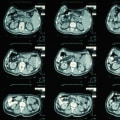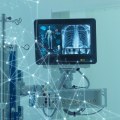As healthcare continues its shift toward patient-centered care, one of the most transformative developments has been the expansion of medical imaging into home-based settings. Once confined to hospitals and specialized clinics, diagnostic imaging is now being reimagined through portable technologies, telehealth integration, and remote collaboration. This evolution not only enhances early detection and monitoring but also makes high-quality diagnostics more accessible to those with mobility limitations, chronic conditions, or geographic barriers. From clinic to couch, medical imaging is becoming an essential part of a larger effort to decentralize care—delivering precision without requiring a hospital visit.
Portable Imaging, Powerful Insight
Advancements in portable imaging devices—such as handheld ultrasounds, mobile X-rays, and compact digital scanners—have changed the way diagnostics are administered. These tools are designed to be lightweight, battery-operated, and wirelessly connected to cloud systems, enabling physicians and technicians to perform imaging procedures in the comfort of a patient’s home. This is particularly valuable for elderly individuals, post-operative patients, or those living in rural areas, where travel to a medical facility may be burdensome or even unsafe. The result is faster diagnosis, reduced stress, and improved treatment continuity without sacrificing the accuracy typically expected in clinical settings.
Real-Time Collaboration and Remote Analysis
Home-based imaging isn’t just about capturing scans—it’s about integrating them into the broader care ecosystem. With secure cloud platforms, images can be transmitted instantly to radiologists, primary care physicians, or specialists who can analyze and interpret results in real time. This ensures that patients receive timely feedback, adjustments to treatment plans, or referrals when necessary. Combined with telehealth appointments, clinicians can review imaging results with patients face-to-face on-screen, enhancing understanding and strengthening trust. The ability to turn a home into a remote diagnostic suite creates a powerful extension of clinical care without the barriers of travel or scheduling bottlenecks.
Improving Outcomes Through Early Detection
Medical imaging at home allows providers to identify complications before they escalate. Patients recovering from surgery or managing chronic illnesses can benefit from routine, at-home scans that reveal changes in tissue, organ function, or vascular conditions early. For example, a patient with heart failure can undergo periodic ultrasounds to track fluid accumulation, allowing care teams to intervene before a hospital visit is needed. Similarly, at-home lung imaging for COVID-19 or other respiratory conditions has proven vital in triaging care while reducing infection risks. When diagnostics come to the patient, care becomes proactive, not reactive.
Access and Equity in At-Home Diagnostics
For imaging to be truly effective in the home, accessibility must be part of the equation. This includes designing home environments that accommodate not only equipment but also the needs of patients with limited mobility. That’s where partnerships with accessibility experts are essential. Providers frequently consult resources like Rtclift – Your accessibility partner to ensure that imaging procedures can be conducted safely in homes equipped with lifts, ramps, or accessible treatment zones. It’s not enough to bring the technology home—it must be usable, comfortable, and empowering for all patients.
The Future of Diagnostics is Personal
The expansion of medical imaging into the home represents a major leap in personalized healthcare. It bridges the gap between convenience and clinical rigor, allowing patients to stay engaged in their own care without stepping outside their door. By combining portable technology, real-time communication, and thoughtful accessibility planning, home-based imaging turns living rooms into points of proactive care—ushering in a future where diagnostics are as mobile and responsive as the people they serve.






